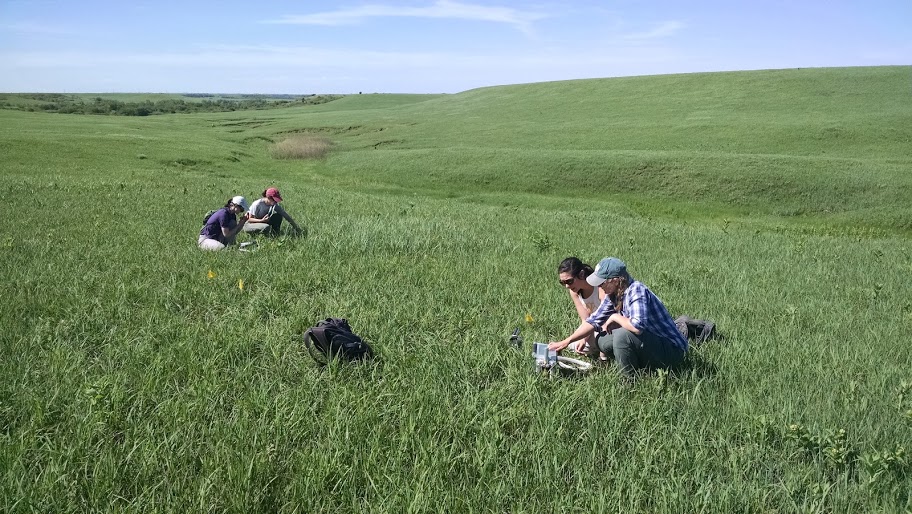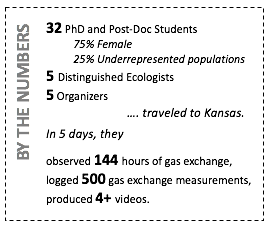
annually-burned watershed.
On June 5th, 45 plant eco-physiologists traveled to Kansas from all corners of the country to take part in the inaugural PhysFest. This “un-meeting,” held at the Konza Prairie Biological Station and LTER Site and hosted by the Kansas State Plant EcoPhys Lab, aimed to break all the rules of a traditional scientific gathering: no research presentations, and no lecturing. Instead, PhysFest provided five days of hands-on instruction, group collaboration, and informal interactions — and according to participants, “lots of fun.”
Plant physiological ecology, the study of how an organism’s physiology adapts to environmental conditions, spans the biological and physical sciences. The very interdisciplinary nature that gives ecophysiology its 
Their initial call for PhysFest applicants elicited far more interest than anticipated. Ultimately, 32 junior scientists joined the 5 organizers, 4 other faculty, and 5 “Distinguished Ecologists” to answer the question, “What is the physiological variability within common growth forms of tallgrass prairie?” This pre-defined subject served as a vehicle for intensive hands-on instruction in how to measure gas exchange, plant hydraulics, and fluorescence—among other characteristics.

participants how to make pressure volume curves.
Evening activities included workshops on career development and getting your next job, as well a panel discussion with the ecologists about their career decisions and perspectives on the field. PhysFest’s unique format provided a natural platform for combining idea development, mentoring, and networking. Nippert reflected, “Everyone had a fantastic attitude, worked hard, and was giving of their time. It was an experience I’d be happy to share again with each of the attendees.”
PhysFest did not end with its conclusion on June 9th. Four videos from the event have already been produced—with more in the pipeline. The videos are intended to supplement undergraduate teaching and expand the field’s reach into classrooms, and soon all will be available for upload from a YouTube Phys-Fest channel.










